Pedestrian-only Express Boat Between Bodo and Svolvær
In addition to the Bodo-Moskenes car ferry, there is also a pedestrian-only express boat that goes once daily between Bodø and Svolvær in the eastern part of Lofoten. This ferry is not for free.
 While the Hurtigruten and Bodø-Moskenes Car Ferry share the same ferry terminal, the passenger-only speedboat to Svolvær leaves from Bodø sentrumsterminalen kai.
While the Hurtigruten and Bodø-Moskenes Car Ferry share the same ferry terminal, the passenger-only speedboat to Svolvær leaves from Bodø sentrumsterminalen kai.
Travel Pass Nordland
If you plan to travel in Lofoten using public transport, you might want to purchase the Travel Pass Nordland. It costs 1290 NOK for 7 days of unlimited public transport in Nordland county, which includes the whole of Lofoten, Bodø, and the areas south of Bodø.
This ticket also includes the express boat going between Bodø and Svolvær!
To take advantage of the express ferry with your Travel Pass Nordland, you go to Reis Nordland, and in the ticket section, you scroll down until you find the Travel Pass Nordland. Since the express boat is included in the Travel Pass Nordland, you do not pay anything but still need to pre-book your spot.

Bodø – Svolvær Passenger Only Express Boat Price (2025)
The Bodø-Svolvær speedboat has traditionally been quite pricey. However, between 2023 and 2024, the price decreased substantially after an ongoing discussion about the ferry needed to be cheaper.
👉435 NOK per adult, down from 745 NOK last year (2023)
👉 218 NOK per child, student, and senior, down from 373 NOK last year
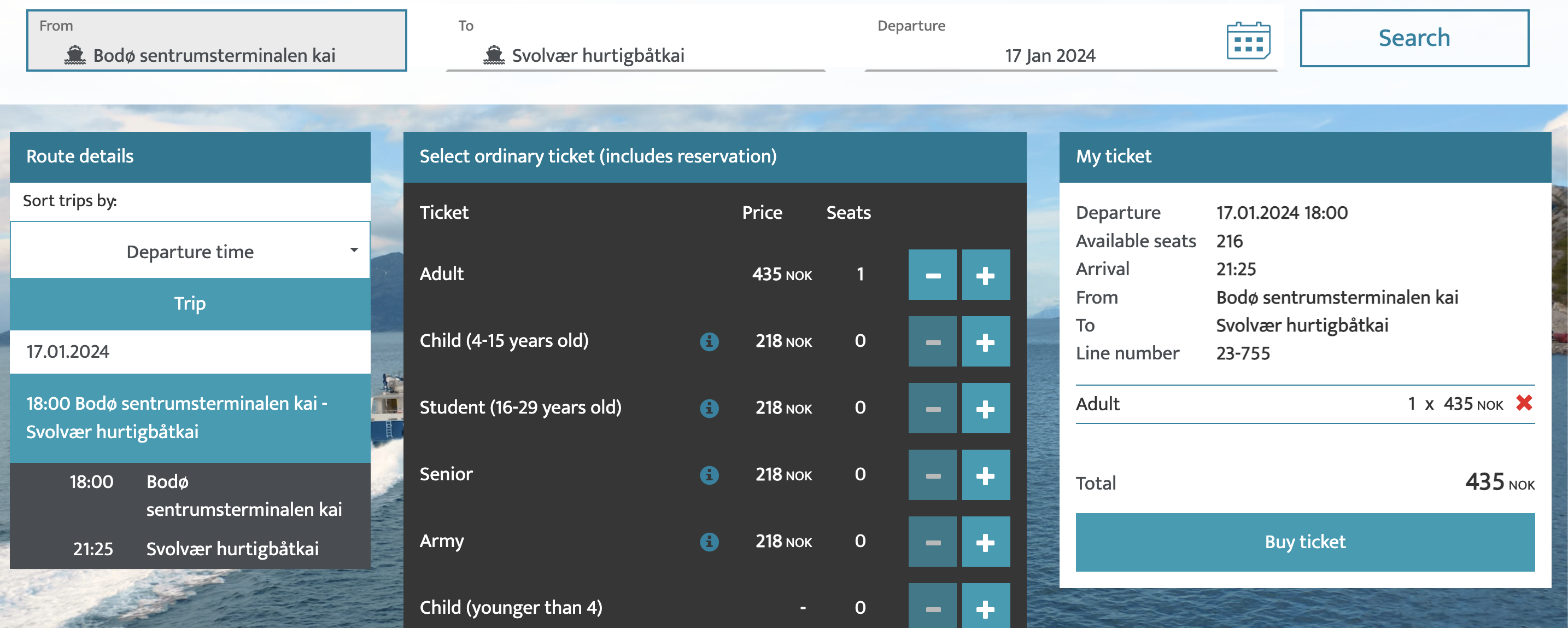
Free Car Ferry between Bodo and Lofoten
Since July 1, 2022, the ferry connections in Norway, which had less than 100,000 passengers in 2019, are free of charge for passengers and cars.
In Lofoten, this applies to the Svolvær – Skrova – Skutvik ferry operated from June 1 to August 31. But also the stretch between Moskenes – Værøy – Røst – Bodø!
Let me explain the second one a bit more. The ferry between Moskenes and Bodø has two different routes. Some ferries go directly from Moskenes to Bodø, completing the crossing in about 3,5-4 hours. Some ferries stop along the way on the islands of Værøy and Røst, extending the trip between Moskenes and Bodø to 7 hours.
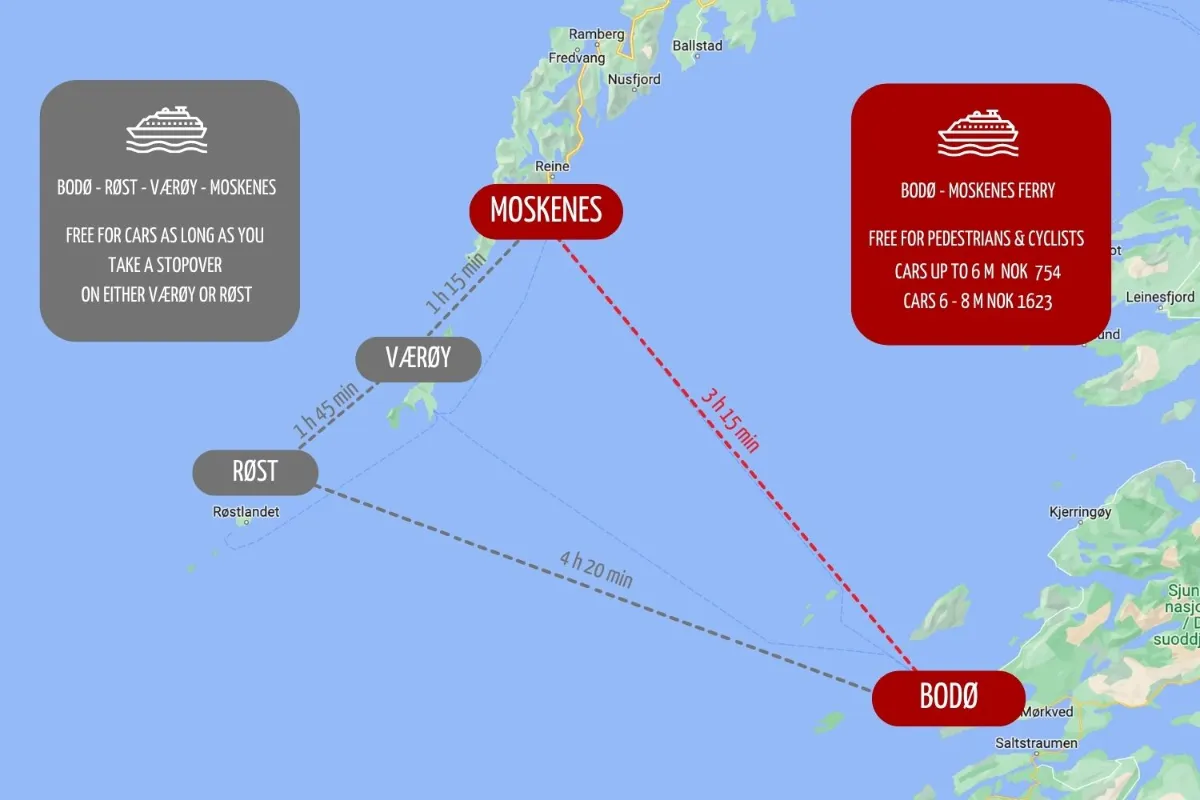
The direct trip from Moskenes to Bodø can cost you over 2000 NOK if you travel with a big campervan. However, you will not pay anything if you plan a stopover on one of the islands (Værøy or Røst).
The only condition is to disembark the ferry on one of these islands and continue your trip on board another ferry.
Passengers traveling without a vehicle do not pay anything, even on the direct route.
Spot guarantee on the Bodø – Røst – Værøy – Moskenes Ferry
Here comes the catch. Prebooking the “free” ferry on the route Bodø – Røst/Værøy and Røst/Værøy – Moskenes does not include the 250 NOK booking fee if you travel with a vehicle.
However, if you want to prebook the ferry as a pedestrian, you will have to pay the 250 NOK reservation fee as of now.
We contacted Torghatten Nord about this ridiculous rule, and they replied that it is a precaution for the locals to be able to get a spot on the ferry.
We believe it would be better if locals had the right to board the ferry before tourists. To address this, there should be dedicated lines at the ferry terminals reserved for local residents and industry so they can get on the ferry without paying the reservation fee. Since introducing the free ferry, the islands of Værøy and Røst have become popular pit stops, making it increasingly difficult for locals to secure a spot on board.
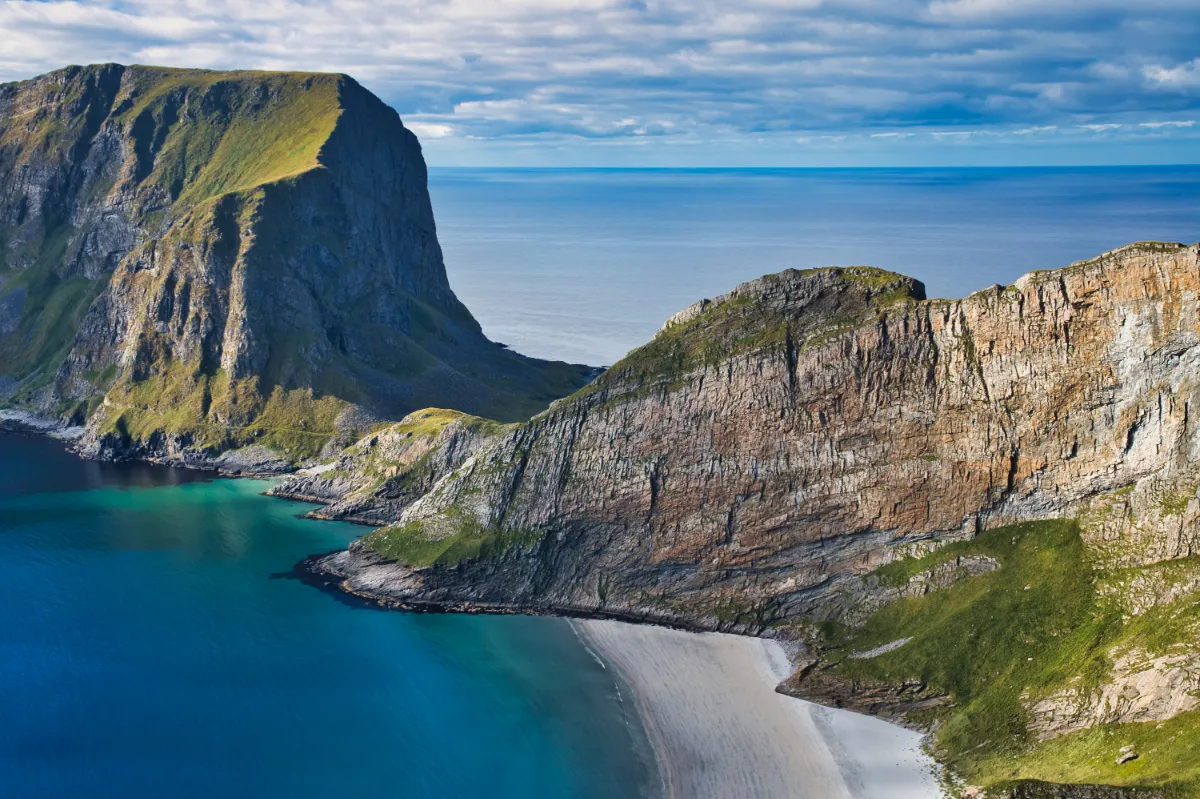 Værøy
Værøy
OUR TIP: SPEND A DAY AT VÆRØY
We recommend spending a day at Værøy, a small island about 30 km (18 miles) from the western coast of the Lofoten Islands. It’s a tiny, concentrated version of Lofoten that offers a lively fishing community, stunning landscapes, fascinating history, and numerous well-signposted hiking trails. The highlight is the hike to Håheia, but you can easily spend three days exploring the island.
There is no designated campsite on the island. However, all campervan and motorhome owners are asked to park/camp on the island’s northern side at the former airport. The airport was recently sold, and parking there is no longer free, though.
Cancellations of the Bodø – Moskenes Ferry
The crossing of Vestfjorden between Bodø and Lofoten is Norway’s longest and roughest ferry route. If you are prone to seasickness, check the weather forecast before your trip and use medication to control your symptoms.
If the weather forecast predicts particularly stormy weather (be alerted if the wind speed should be higher than 18m/s), the ferry might get canceled. The cancellations usually occur during the autumn/winter; however, they can also happen in summer.
For example, we had a big storm a few years ago, in July of 2021, when the low pressure brought strong winds and large amounts of precipitation. In several places in Lofoten, wind gusts reached a speed up to 27-30 meters, and all ferry connections between Lofoten and the mainland were canceled.
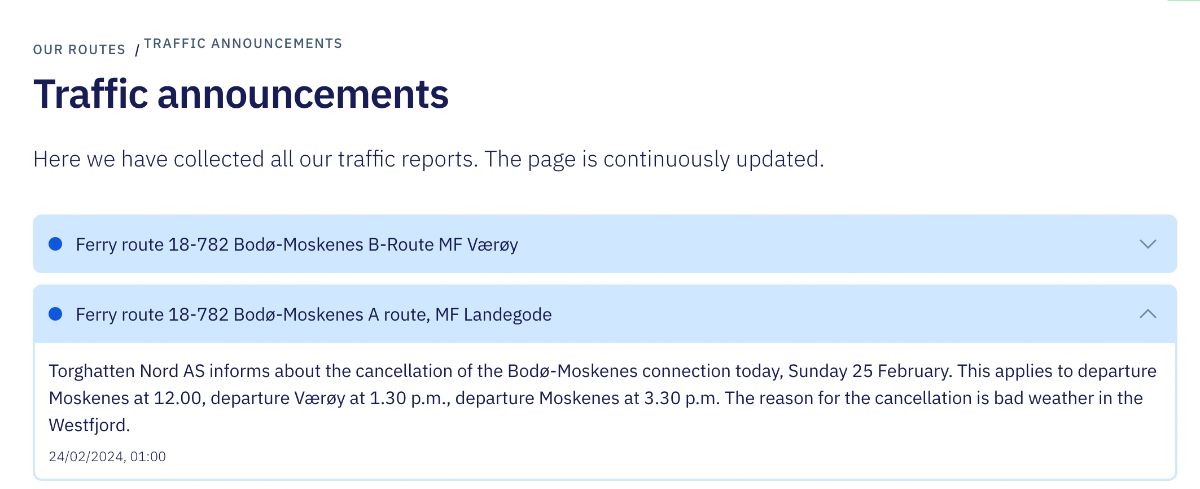 Unfortunately, you will not be informed about any ferry cancellations even though you preordered your tickets. If the weather forecast predicts strong winds, watch Torghatten´s webpage and translate the service messages to English.
Unfortunately, you will not be informed about any ferry cancellations even though you preordered your tickets. If the weather forecast predicts strong winds, watch Torghatten´s webpage and translate the service messages to English.
Hydrogen ferries between Bodø and Lofoten
The project introducing hydrogen ferries on the Bodø-Moskenes stretch aims to reduce carbon emissions and promote sustainable maritime transportation. The hydrogen ferries have been commissioned and are expected to start operating by the end of 2025. These ferries will use a hydrogen facility in Bodø for fueling, eliminating the need for hydrogen transportation.
The Landegode ferry, currently powered by natural gas and introduced in 2012, will be replaced. The two new hydrogen ferries will maintain the same capacity and schedule, with the primary change being the significant reduction in emissions.
Enjoy your trip to Lofoten, and let us know in the comments if you have any questions regarding the Bodo-Moskenes ferry.
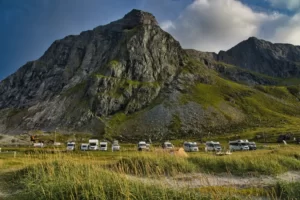

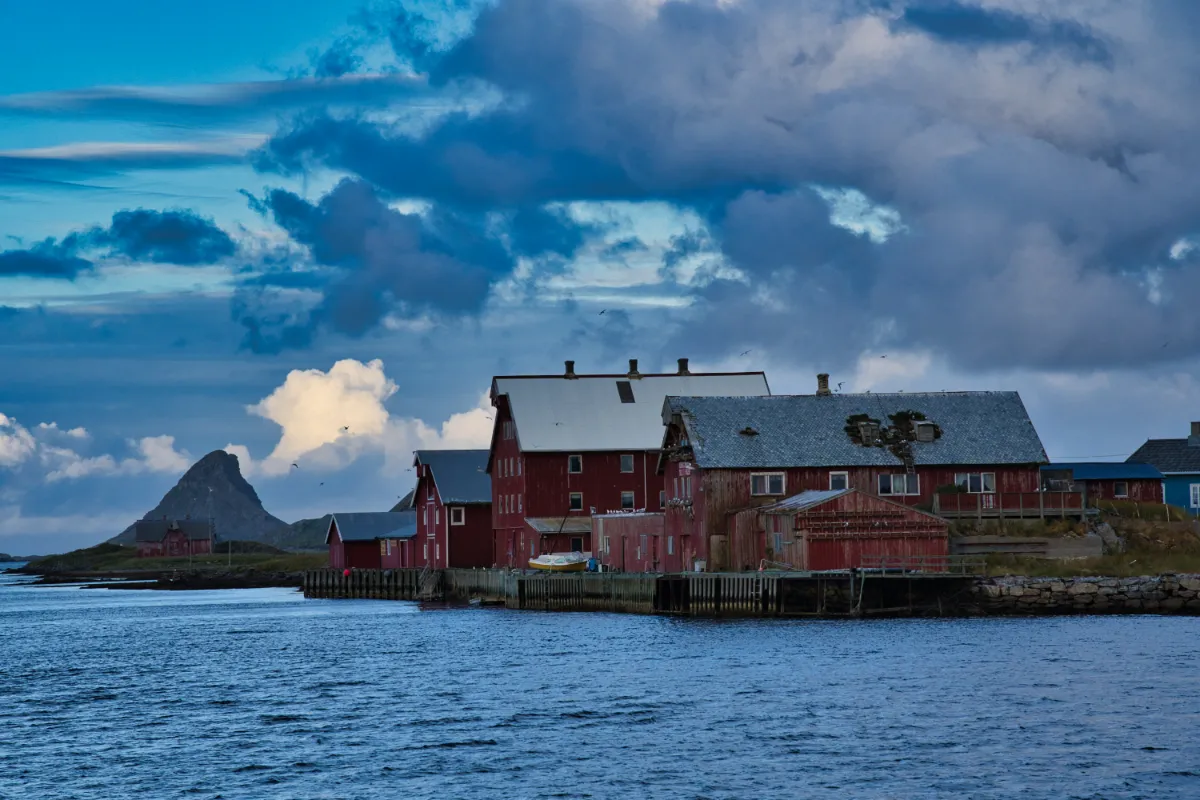 The Island of Røst
The Island of Røst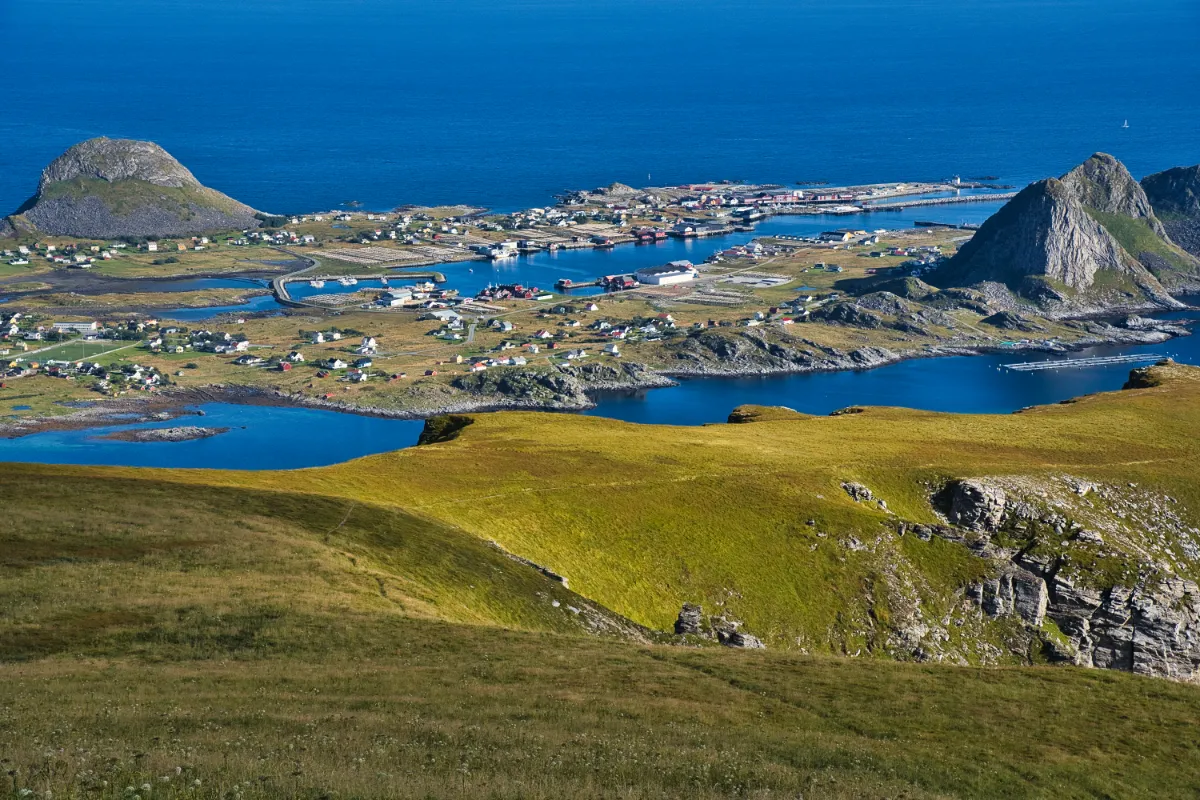 The Island of Værøy
The Island of Værøy There is a direct ferry going between Bodo and Moskenes and a longer route that stops at the islands of Værøy and/or Røst.
There is a direct ferry going between Bodo and Moskenes and a longer route that stops at the islands of Værøy and/or Røst. 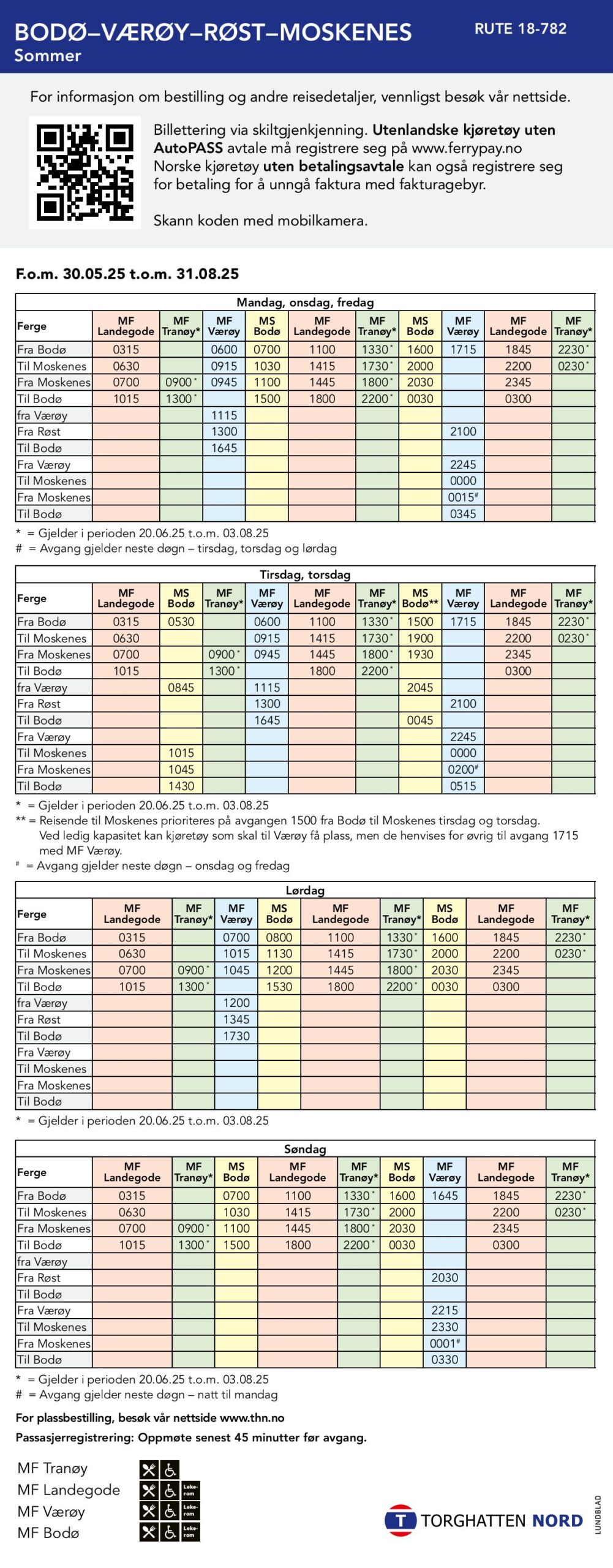
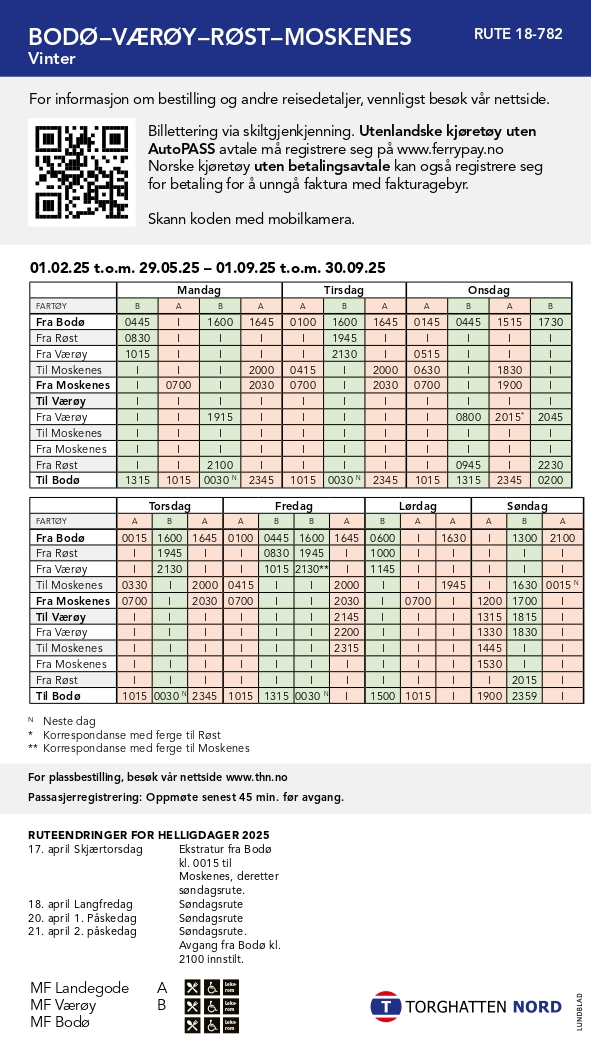
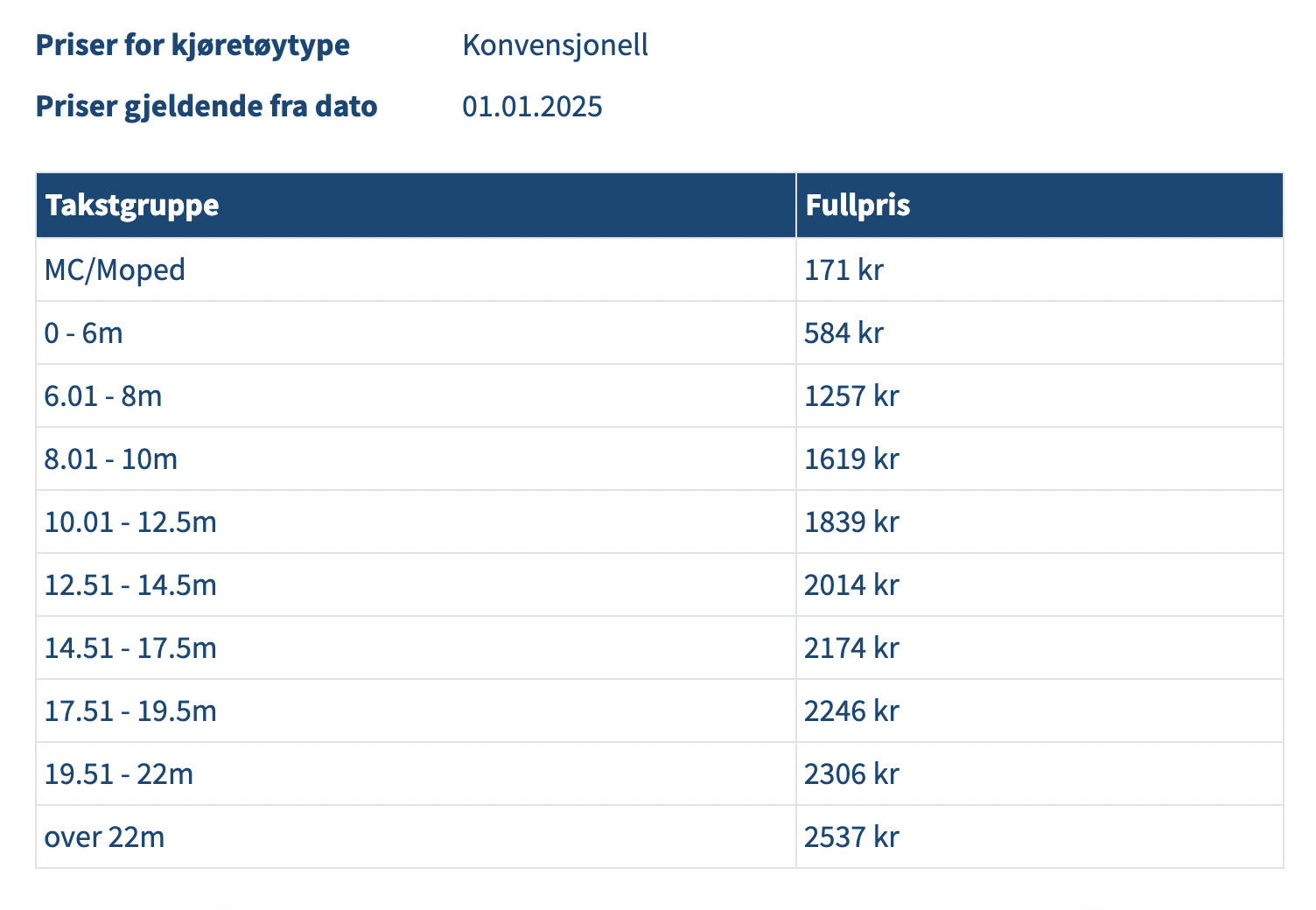 Prices for the Bodø – Moskenes Car Ferry (2025) (without the reservation fee)
Prices for the Bodø – Moskenes Car Ferry (2025) (without the reservation fee)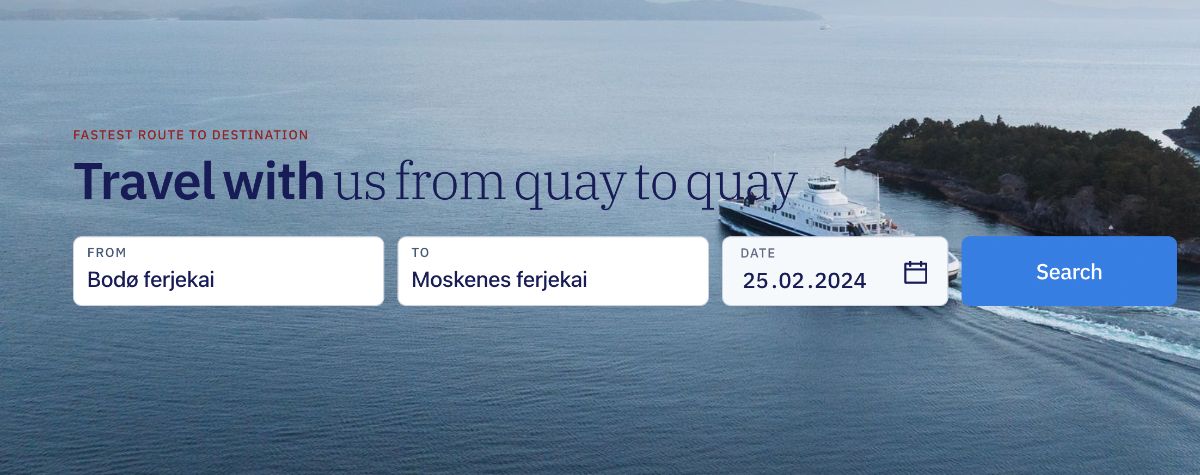
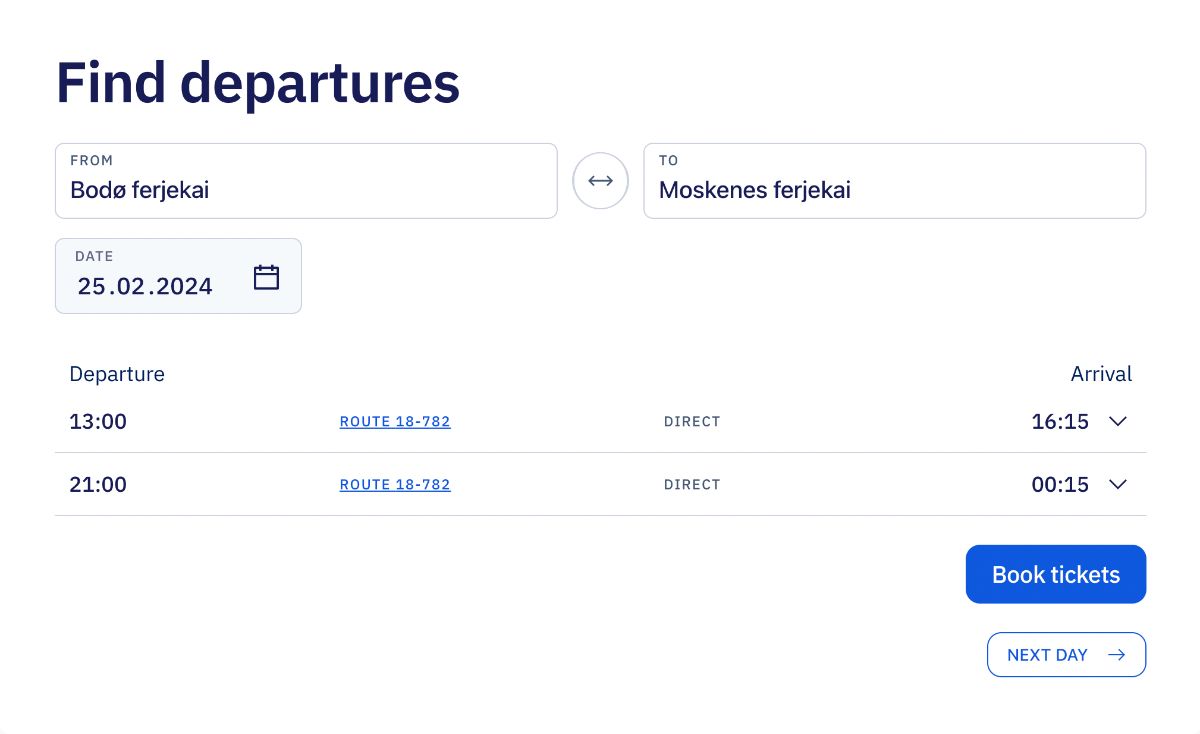
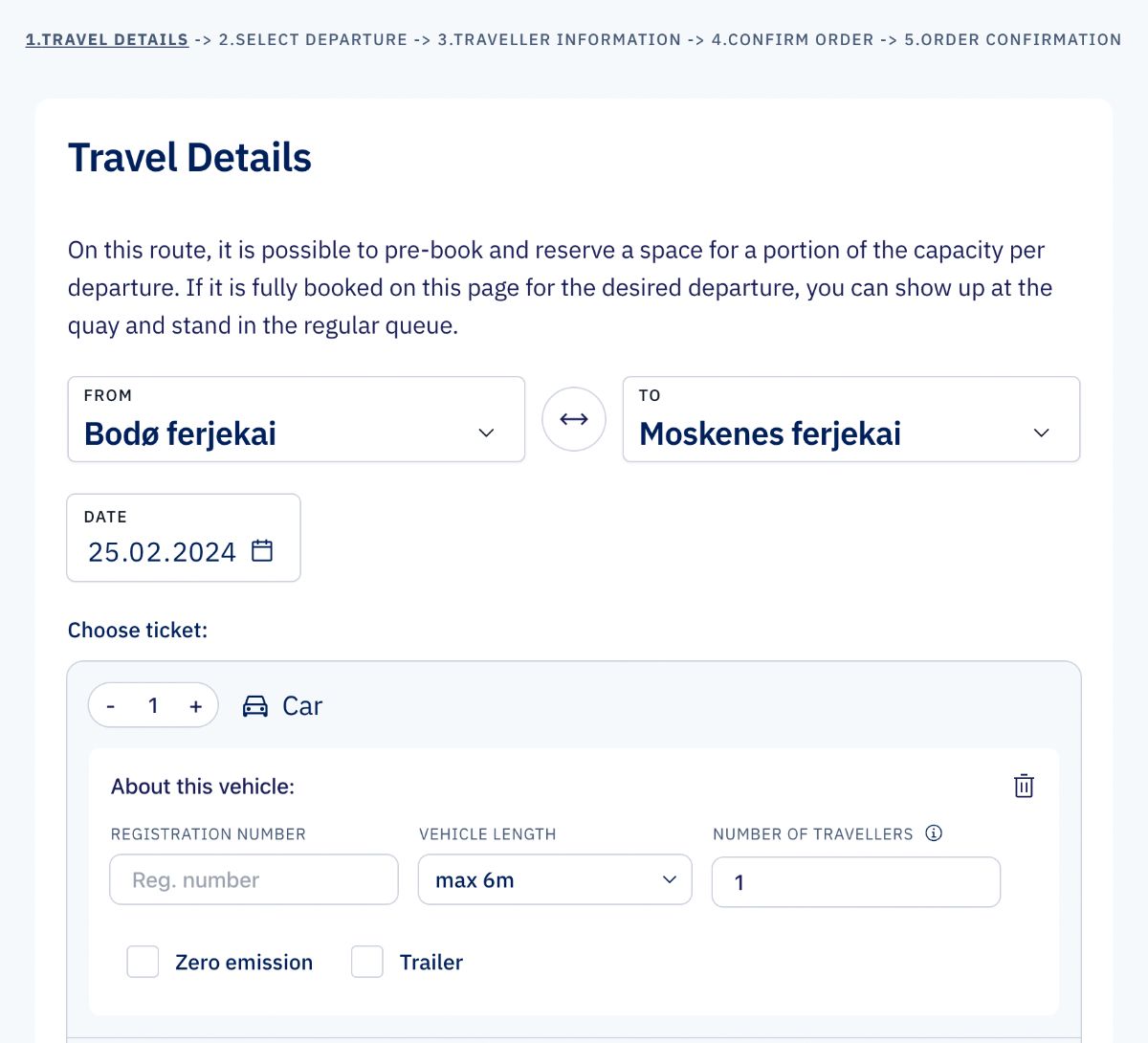
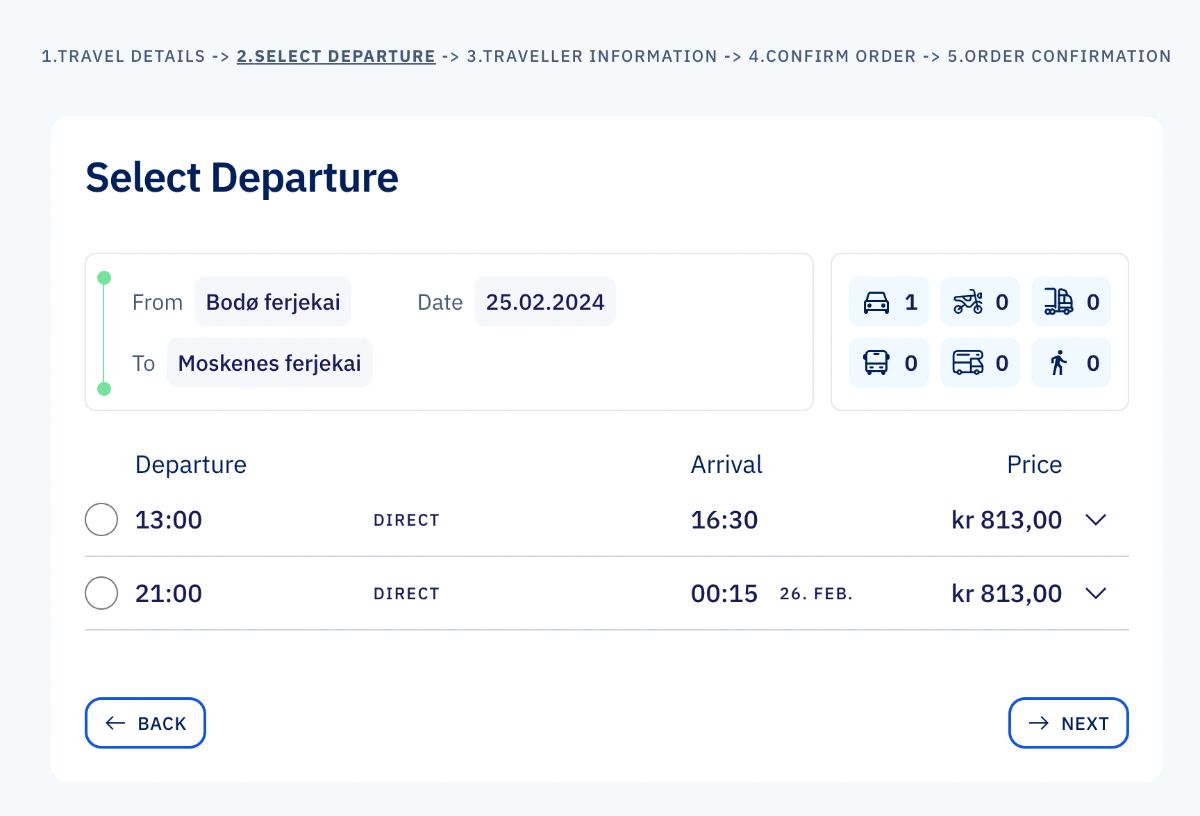
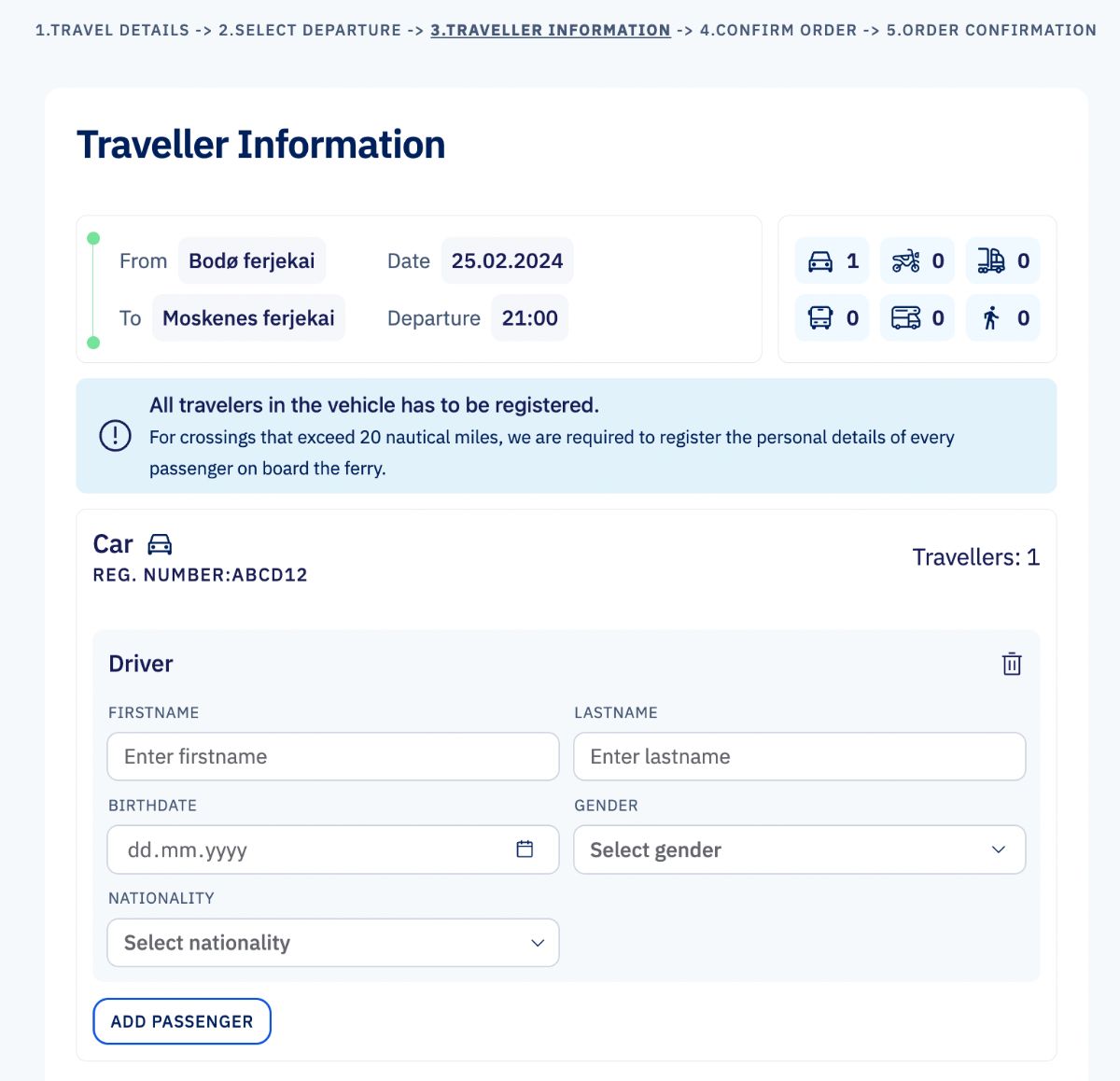

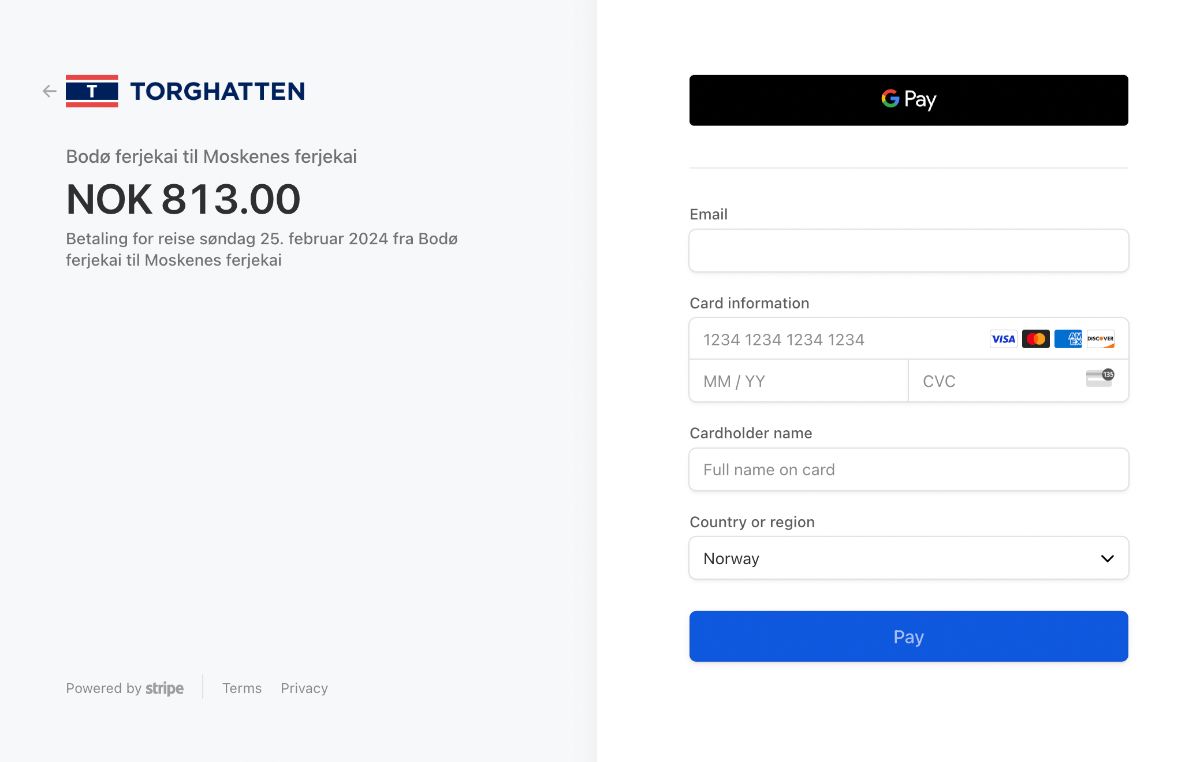
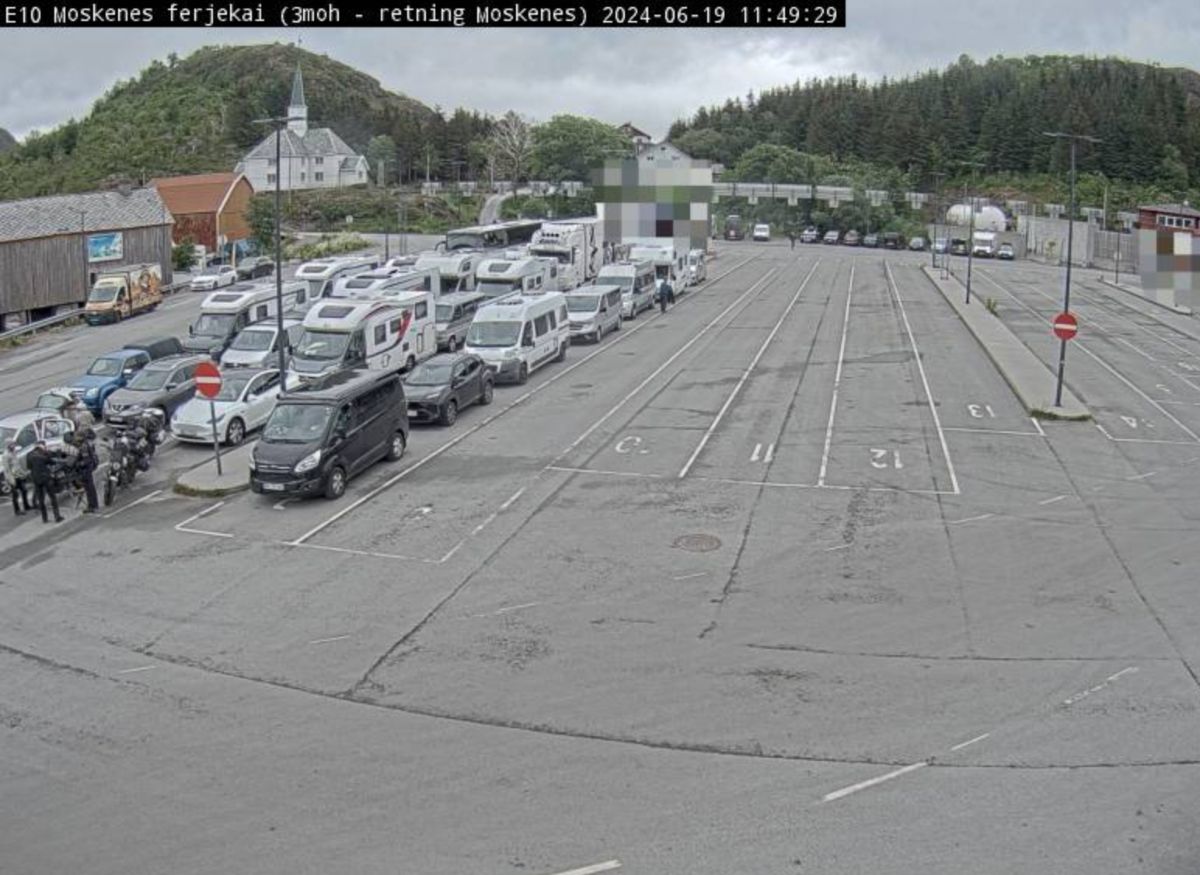
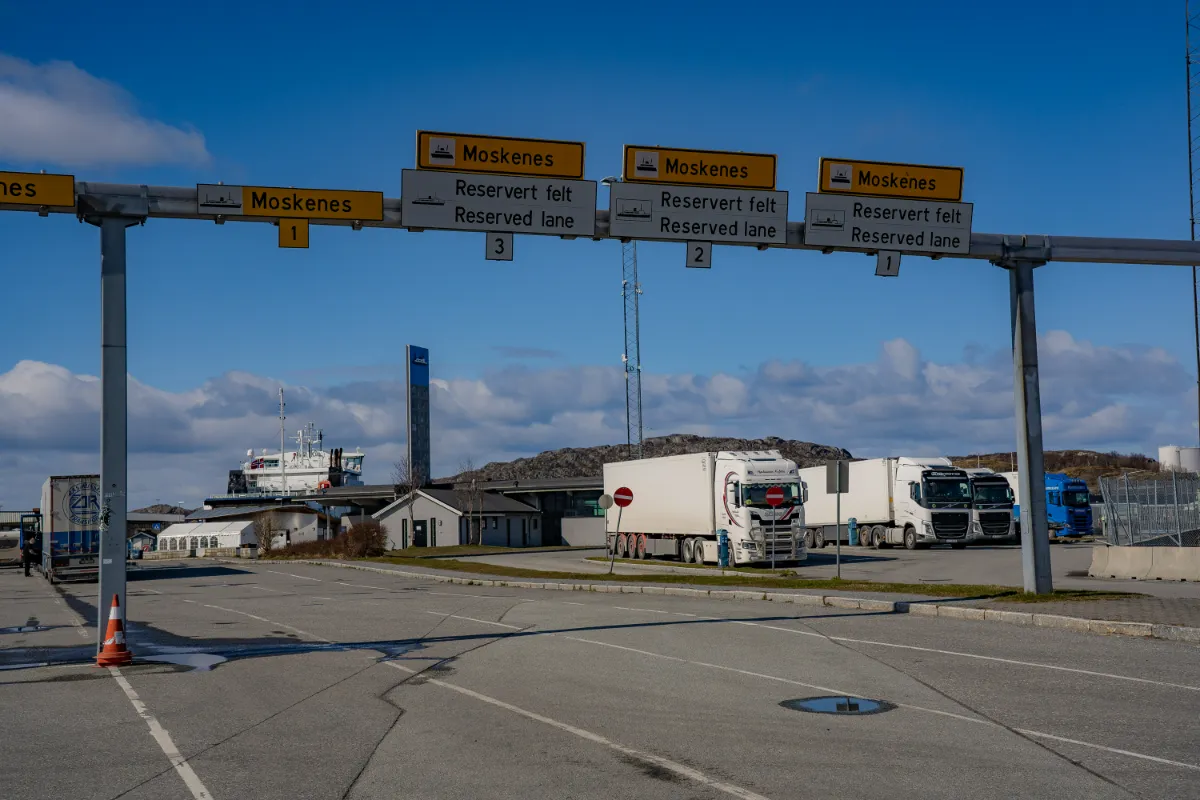 The ferry terminal is in Bodø. Remember to check the correct line based on your final destination. If you pre-booked your tickets, line up in the reserved lanes 1, 2, and 3.
The ferry terminal is in Bodø. Remember to check the correct line based on your final destination. If you pre-booked your tickets, line up in the reserved lanes 1, 2, and 3.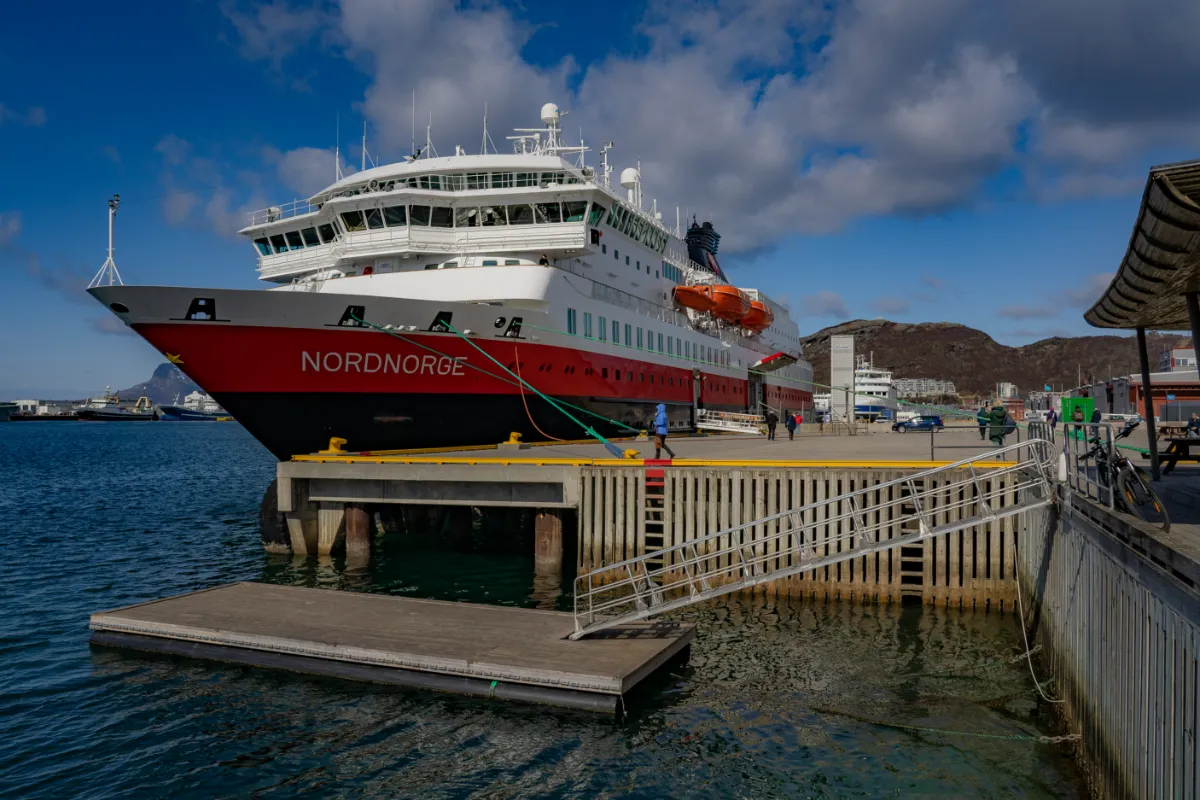 Hurtigruten and the car ferry heading to Moskenes, Røst, and Værøy share the same ferry terminal. If you want to take the passenger-only speed boat to Svolvær, you need to walk to another terminal in the city center (about 10 10-minute walk).
Hurtigruten and the car ferry heading to Moskenes, Røst, and Værøy share the same ferry terminal. If you want to take the passenger-only speed boat to Svolvær, you need to walk to another terminal in the city center (about 10 10-minute walk).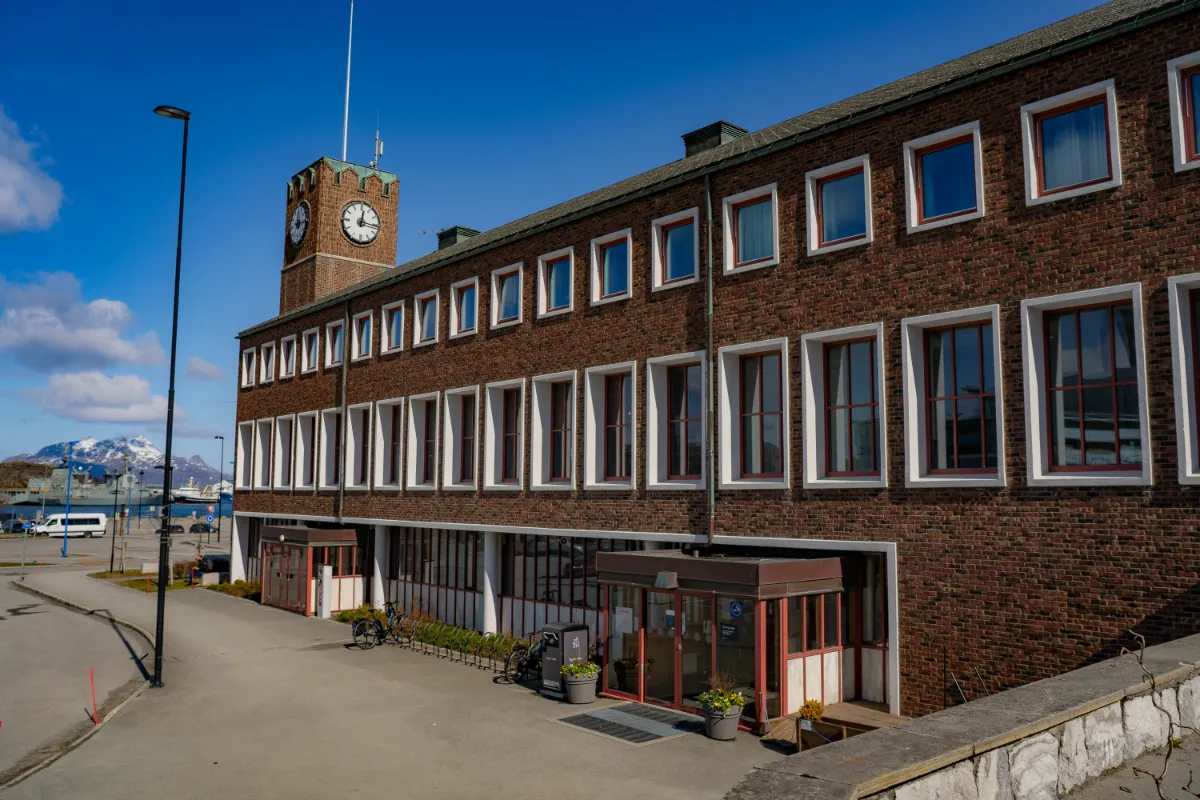 Bodø is the northernmost train station in Norway. You can take a train here from Trondheim or Oslo (via Trondheim). Getting to Narvik by train is also possible, but you need to go through Sweden.
Bodø is the northernmost train station in Norway. You can take a train here from Trondheim or Oslo (via Trondheim). Getting to Narvik by train is also possible, but you need to go through Sweden.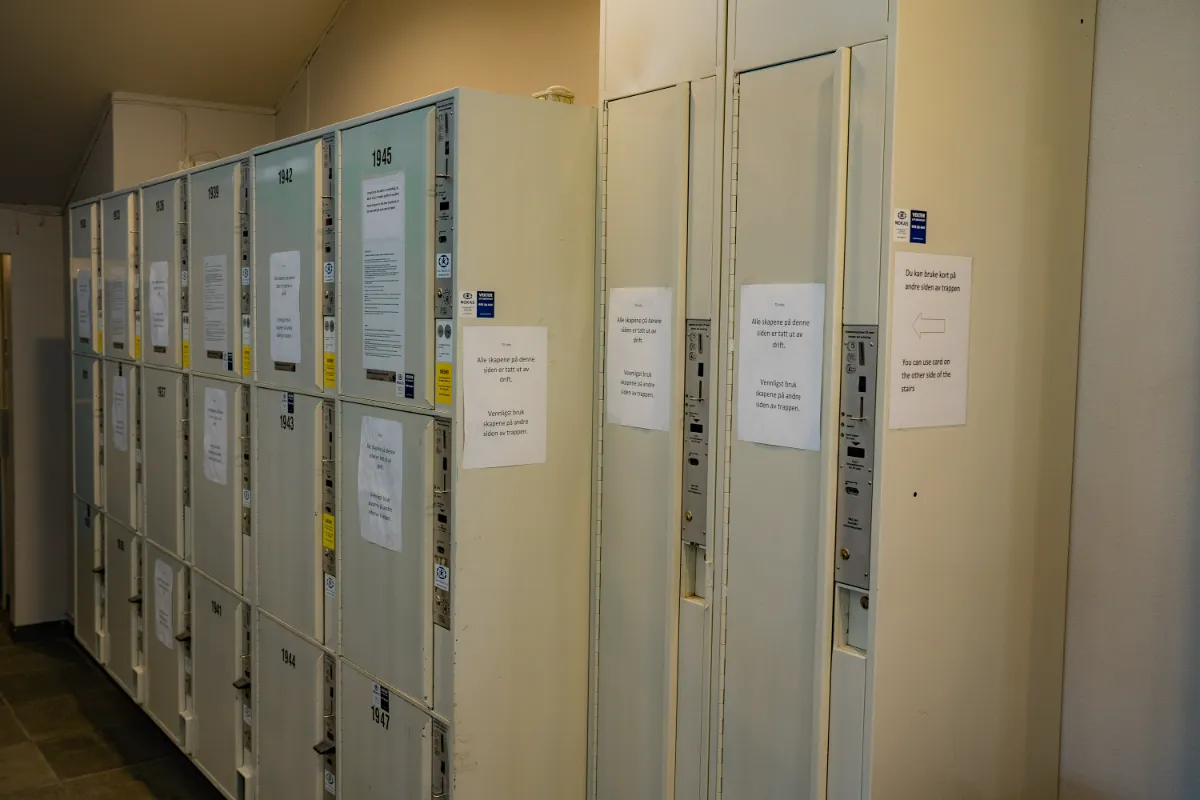 You can store your luggage at the train station in Bodø.
You can store your luggage at the train station in Bodø.
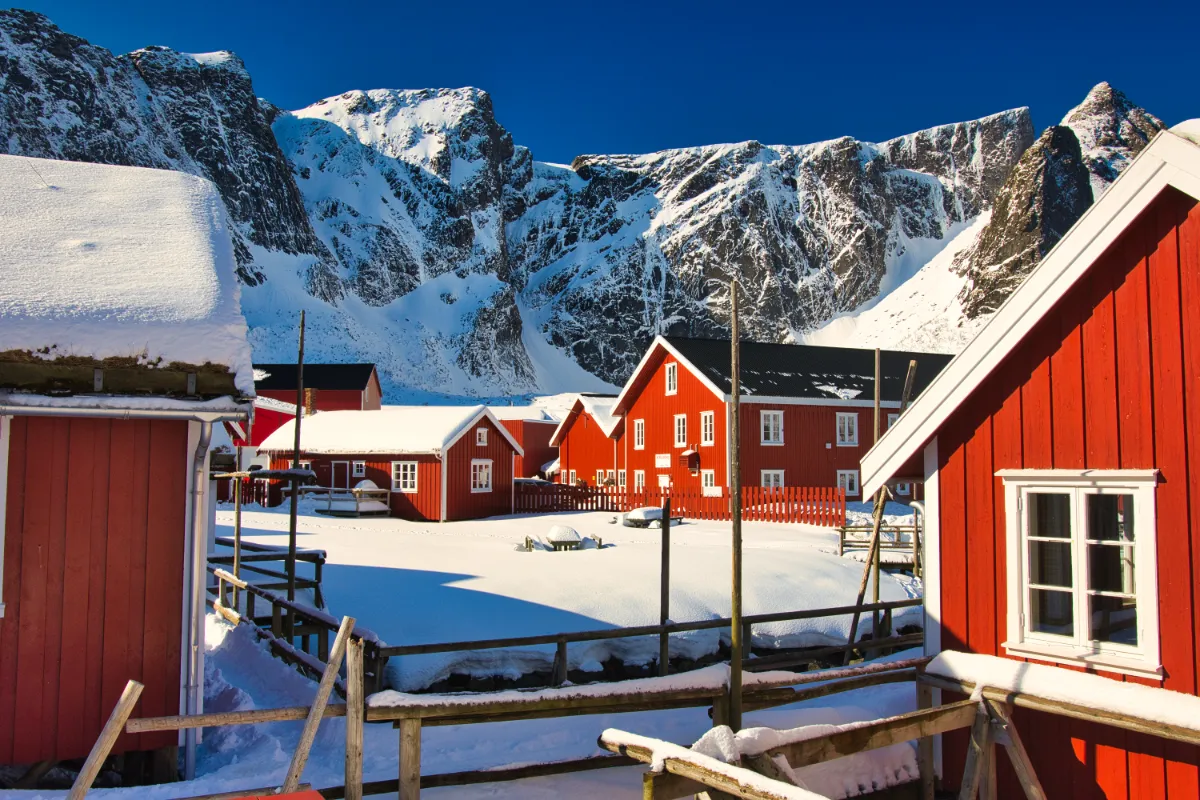
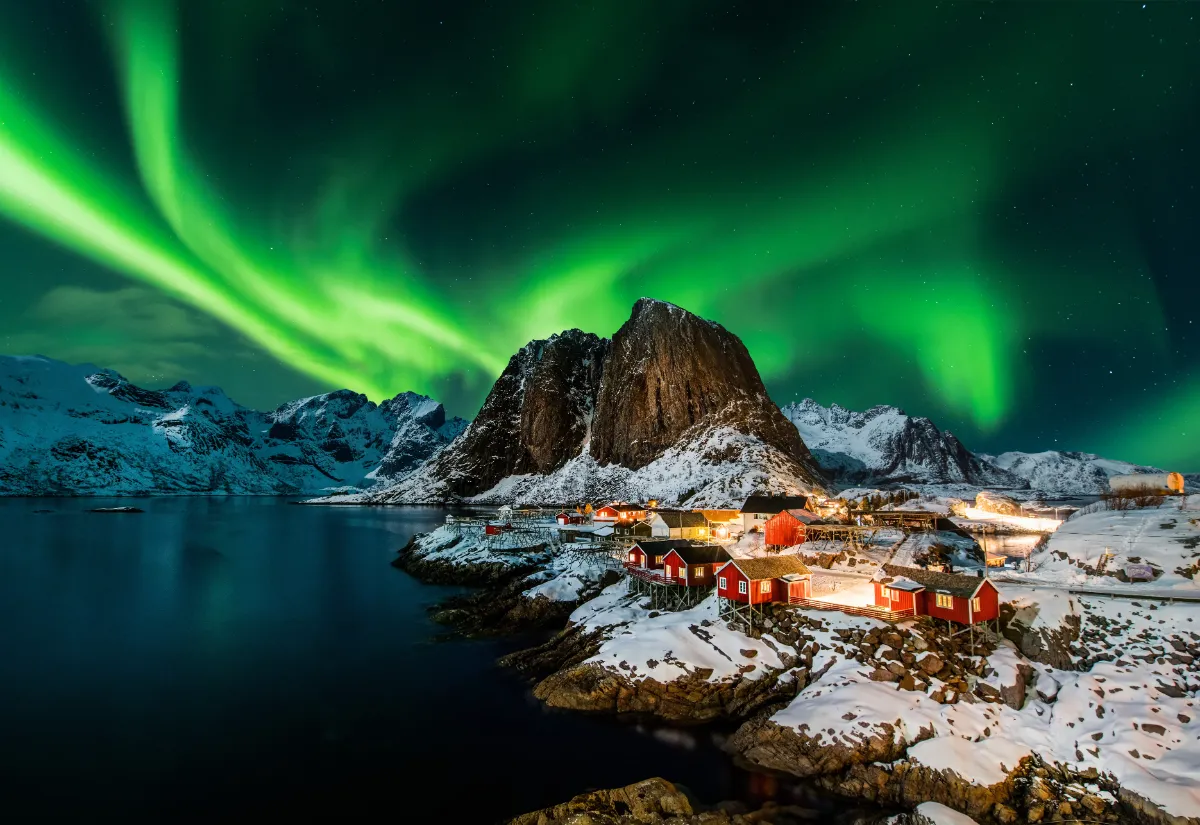
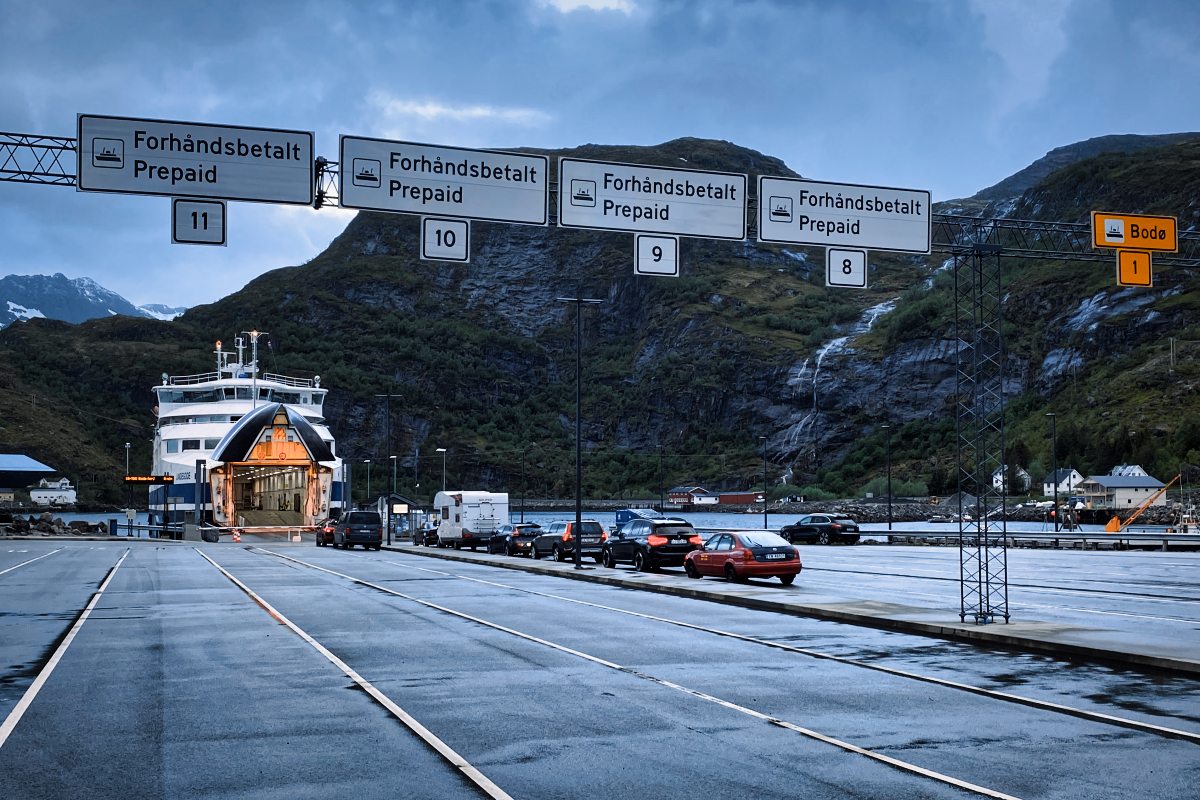 Lines for those who bought a pre-paid ticket
Lines for those who bought a pre-paid ticket First come – first serve lines
First come – first serve lines While the Hurtigruten and Bodø-Moskenes Car Ferry share the same ferry terminal, the passenger-only speedboat to Svolvær leaves from Bodø sentrumsterminalen kai.
While the Hurtigruten and Bodø-Moskenes Car Ferry share the same ferry terminal, the passenger-only speedboat to Svolvær leaves from Bodø sentrumsterminalen kai.

 Værøy
Værøy Unfortunately, you will not be informed about any ferry cancellations even though you preordered your tickets. If the weather forecast predicts strong winds, watch Torghatten´s webpage and translate the service messages to English.
Unfortunately, you will not be informed about any ferry cancellations even though you preordered your tickets. If the weather forecast predicts strong winds, watch Torghatten´s webpage and translate the service messages to English.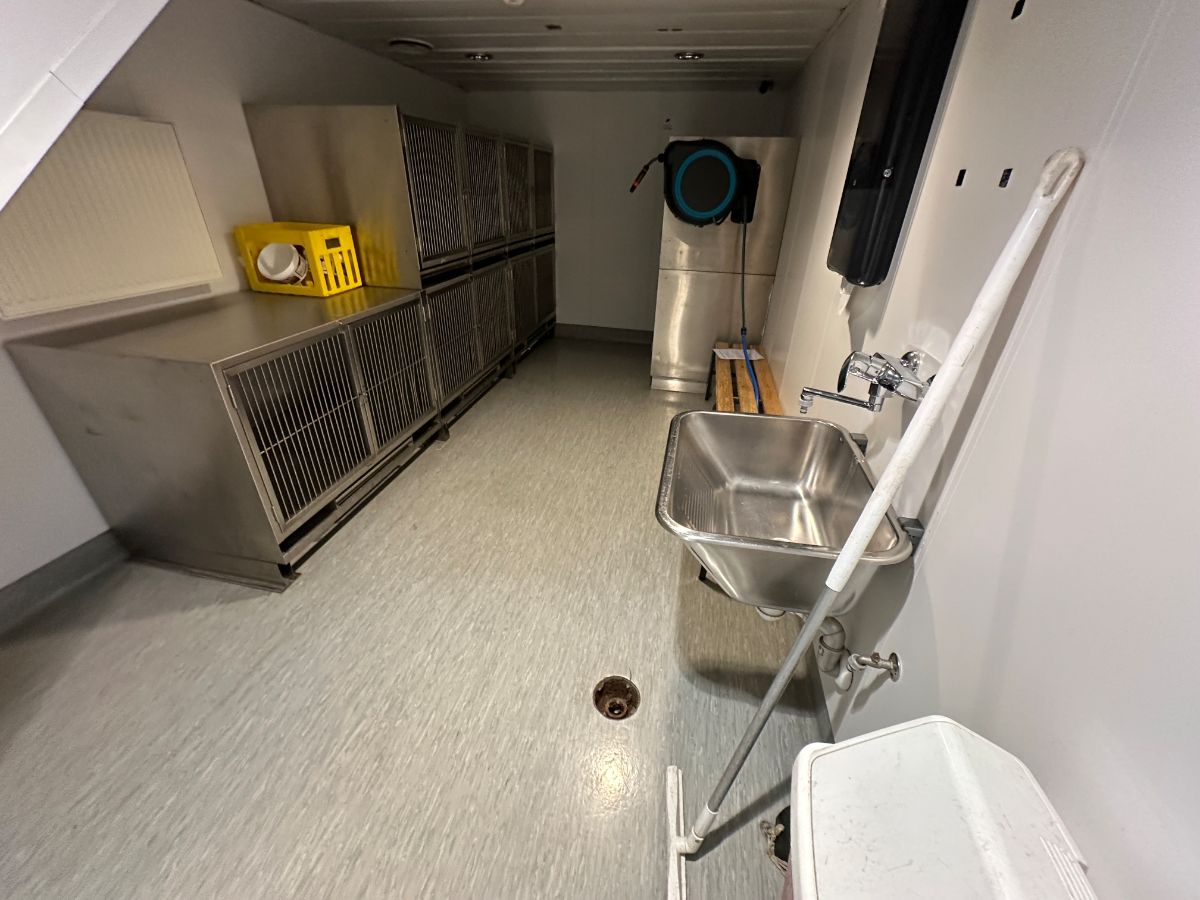
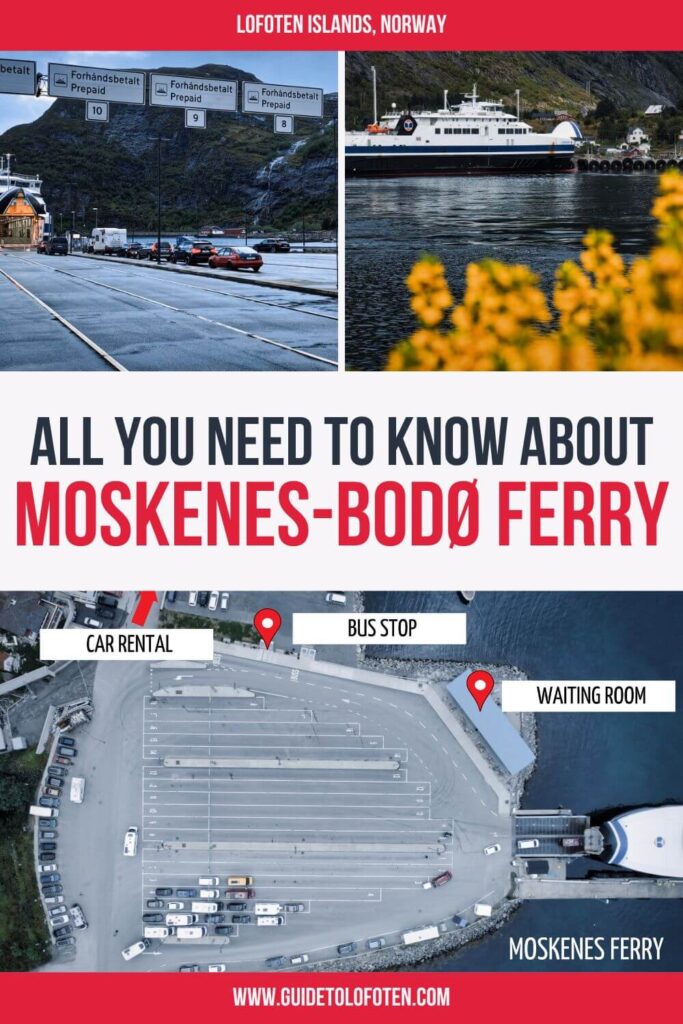
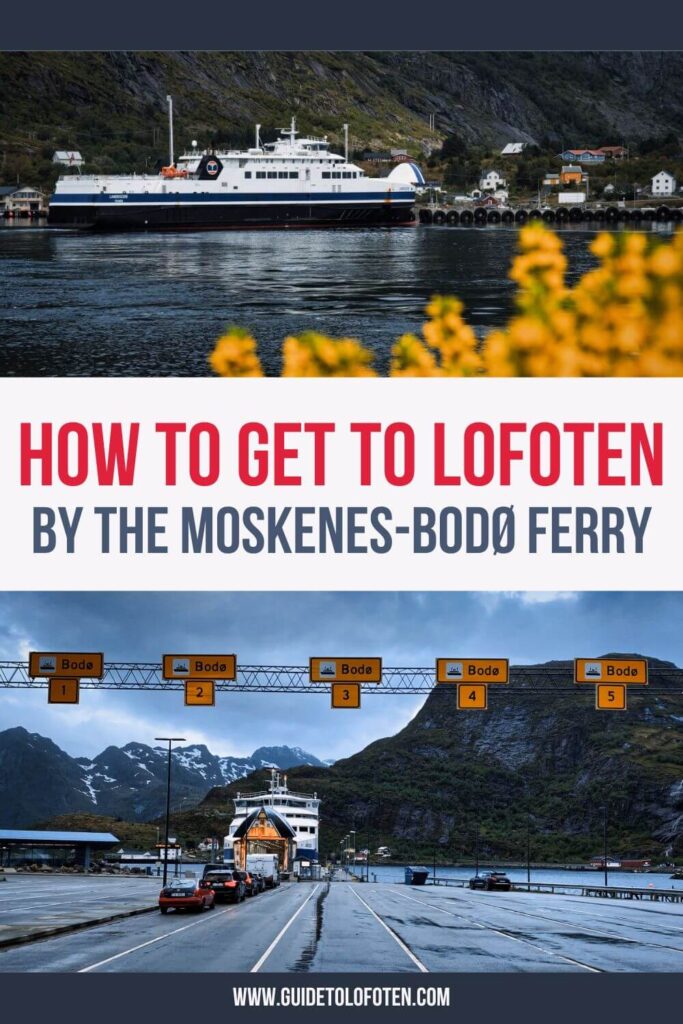


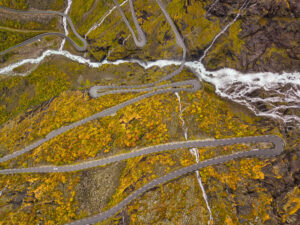

36 Responses
Hola, pues muchas gracias por la información detallada. Viajó a pie, entonces,si tengo tiempo,recomendáis hacer la ruta larga de Bodo a Moskenes por Vaeroy aunque no baje en esta isla?. Si vas a pie entiendo entonces que vas directo al ferry, creo que he visto que hay que hacer un registro online aunque viajes gratis, saludos y gracias
Ciao! è un problema viaggiare come passeggero a piedi ma con una valigia grande + zaino? in questo caso verrà applicata una commissione?
I would like to book the following ferry connections with you. When would that be possible for you?
16 June 2025: Bodø ferjekai-Moskenes ferjekai
Folgende Fährverbindungen möchte ich bei Ihnen buchen. Wann wäre das für Sie möglich?
16. Juni 2025: Bodø ferjekai-Moskenes ferjekai
Mfg. TB
Hi, we do not provide booking for the Bodo-Moskenes ferry, just information. Please book directly with the company that runs this ferry on torghatten.no
Hallo Zusammen
Können sie ungefähr sagen, wie das ganze im April aussieht? Sind da viele Autofahrer unterwegs? Wir planen im April die Fähre nach Moskenes zu nehmen und leider hat es keine Tickets mehr zum reservieren.
Wie oft werden im April Fähren abgesagt?
Vielen Dank für den super Beitrag. Der Erste, der mich wirklich weiter gebracht hat.
Liebe Grüsse aus der Schweiz 🙂
Hello, I’ve noticed that The Bodø-Moskenes ferry is free for pedestrians and cyclists. I want to cross Norway next year and go through the Lofoten Islands. My bike is equipped with a small single-wheel trailer. Is the Moskenes-Bodø crossing free despite my trailer? Thank you very much for your information. All the best. Patrick
Hoi Ivar en Radka,
Zijn er campings op Røst en Vaeros?
En wat kun je daar allemaal doen op die eilanden?
Is de ferry naar Moskenes gratis als je de lange reis neemt via deze 2 eilanden?
Wij staan nu in Bødo op de camping.
Groetjes,
Jose
Hello! I am going to go alone from Bodo to Moskenes without a vehicle, 24 June. I checked the bookingsite and the ferry (13:30) I want to take is sold out. It says that it is still possible to show up without a pedestrian guarantee and stand in the regular line. Should I just go anyway or book the later one just to be safe? Generally speaking are these ferries full or do they tend to be rather empty? I don’t want to pay for the later one and still get one the earlier one I want to take. Thank you!
Good and informative article! I am travelling to Lofoten from Sweden in a couple of days. I wonder where I can book the ferry from Bodo to Moskenes? I am alone with a backpack, no animals and no vehicle.
Hi Dennis, then you do not need to book. As a foot passenger, you have the ferry for free, and we have never heard about any foot passengers who would be denied a spot on board.
Thank you for article! Great source for planning the trip 🙂 We’ll going to take ferry as family 2 adults and two kids 6yo and 1yo, and got some doubts. If I’ll pay guarantee places for free ferry Moskenes-Bodo for two adults is it still will be safe that we all with kids get places?
Hi Nadusja, if you travel without a car, then you do not need to pre-book the ferry.
Hi there, your article & YouTube is great & I have purchased your interactive camping map.
We would like to do a couple of days stopover in Væroy with our motorhome before going on to Moskenes. Do you know if the ferry is still free in Summer 2024 if you do this stopover?
Thanks, Meg & Uwe
Hi Meg & Uwe, yes it is!
Thank you for this article, it’s extremely useful! Quick question though, how to book the free of charge ferry from Bodo to Vaeroy and next day Vaeroy to Moskenes, is that possible online?
Hi Wanda,
If you are traveling without a vehicle, you do not need to book the ferry.
If you are traveling with a car, you can book, but you will pay the reservation fee, even though the ferry is for free.
At the moment, Torghatten Nord’s reservation system is down (for already quite some time), so they do not take online reservations, and it works on a first come – first served.
Cheers,
Radka
Wow 🤩 Great article
Is there wifi on the Ferry ?
Great site, very helpful.
I am planning taking the ferry from Bodø to Moskenes with a motorbike sometime in mid-July and was wondering whether I needed to pre-book a space or whether, with a motorbike, i would be safe just turning up on the day.
Thanks,
Dominic
Hello, thanks a lot for the information. We are taking this ferry this summer and we where surfing the net and the ferry´s official web page without finding anything about booking for pedestrian and bicycles. Really clear now!
Cheers!
Félix
Děkujme Radko a Ivare,
vaše rady jsou na této stránce jsou pro mne velmi užitečné.
Už se těším na velký skoro měsíční okruh severní Evropou a 5 dní budeme i na Lofotech.
Vše nej
Vladimír +420 724 865 394
Great article, thank you. Do you know if you can get food on the ferry?
I have a prebook ferry from Moskenes to Bodo on may 28 th . I need to catch the train at 9:10 pm , however the ferry gets us back to Bodo around 7 pm . Will we have enough time to get car off the ferry , return it and get train on time ? Is there a special lane on ferry that can get car off fastest ?
This website is very helpful and we appreciate your posts and the guidance on these pages. We’re looking forward, having our summer vacation on the Lofoten islands.
Thank you so much for such detailed information and looking forward to our trip.If we do stay overnight on one of the islands is it possible to park somewhere in a motorhome.Given the high price ( even with the autopass) I think many motorhomers will be looking at this option.
We have also had great trouble transferring money for our ferry pass and certainly UK banks charge a lot for this (well probably not compared to Norwegian charges)Also any of them will not transfer to a business
What it needs is a middle man in Norway with a credit card charging facility who would pay locally on your behalf.
I would happily pay them both to avoid the hassle and additional Norwegian fees,which you do not have with certain credit cards.
Just a thought
Hi,
This is a useful article but can you tell me more about taking our dogs on the Moskenes – Bodo Ferry? If we do not wish to leave them in our vehicle is there somewhere we can sit with them instead? We would not want to put them in crates.
I have the same question, is it posible to sit outside on deck with the dog? If not, is it allowed for us to stay in the car together with the dog?
Hi Anders,
During the journey, the dog has to be in the vehicle or a cage in a designated place outside the lounge.
This is to ensure that pets are not in the same room where food is served and to be considerate of people with allergies.
On the ferries MF Landegode, MF Værøy, MF Barøy, and MF Lødingen, there is a designated area for pets, with a cage and water supply. The owners can look after their animals during the crossing, but the designated pet area has no seating or windows.
You are not allowed to stay in the car with your dog or take the dog on board.
Hi Janet,
During the journey, the dog has to be in the vehicle or a cage in a designated place outside the lounge.
This is to ensure that pets are not in the same room where food is served and to be considerate of people with allergies.
On the ferries MF Landegode, MF Værøy, MF Barøy, and MF Lødingen, there is a designated area for pets, with a cage and water supply. The owners can look after their animals during the crossing, but the designated pet area has no seating or windows.
You are not allowed to stay in the car with your dog or take the dog on board.
Wow, very comprehensive! Thank you.
We are Australian’s travelling in Norway for six weeks in June/July and hope to have a good week on Lofoten. I am having a lot of difficulty acquiring an Auto pass through any of the toll providers. We own a camper garaged in UK and have a foreign credit card. Any ideas? This will be an amazing holiday!! So excited
Really comprehensive info that was! Just requesting a clarification on 2 things .
1 – If passengers go free on the ferry from Bodo to moskenes,what about trolly luggages ?
2 – If getting down at vaeroy with the car one day , and board the ferry to moskenes the next day, is it still free ?And how about returning the same route to Bodo ? That’s also free ?
Hi Mustaffa,
1) The luggages go free with the passengers 🙂
2) Yes, it is still free. The condition is that you have to take another ferry than the one that you arrived with. It applies for both the direction Bodø – Røst – Værøy – Moskenes and Moskenes – Værøy – Røst – Bodø.
Cheers,
Radka and Ivar
Thank you very much for putting this together! Do you know if it costs anything to take a bicycle on board the ferry?
Hi Theo,
Thank you for this question. We will include it in the article. You travel with a bike for free.
Cheers,
Radka
Hello,
Thanks for this information, it’s verry helfpull!
I am travelling with my dog. She has to stay inside the mobilehome. Can I stay with her, or do I need to go on deck? (We want to go from Bodo to Moskenes).
Greetings, Kim
Thank you so much for this information! It is so hard to understand through all the other websites but you have made it clear and easy! Brilliant job!
Hi Millie! We are very happy to hear that you found our post useful! Thank you for your positive feedback!
Ivar and Radka